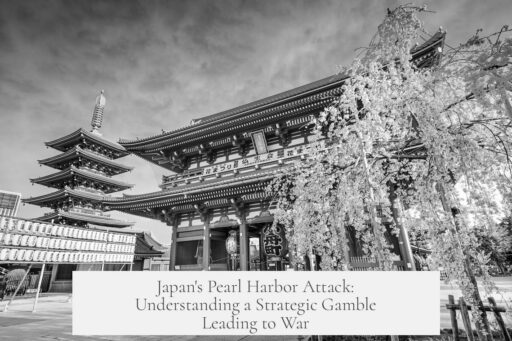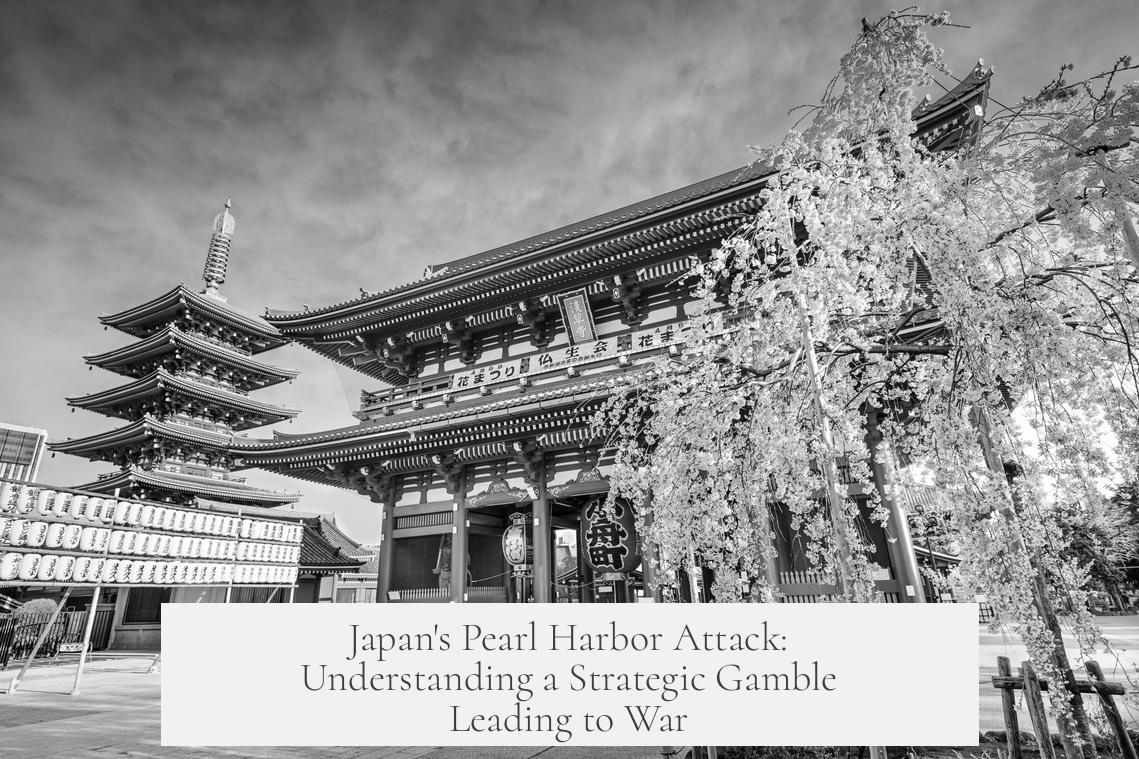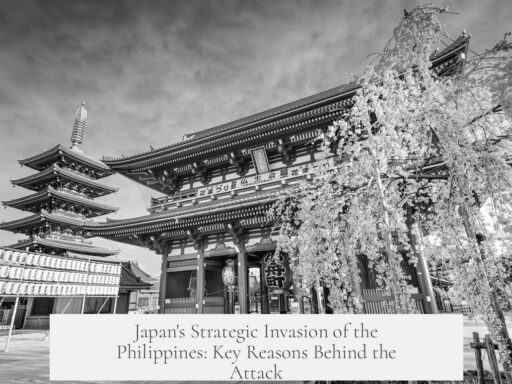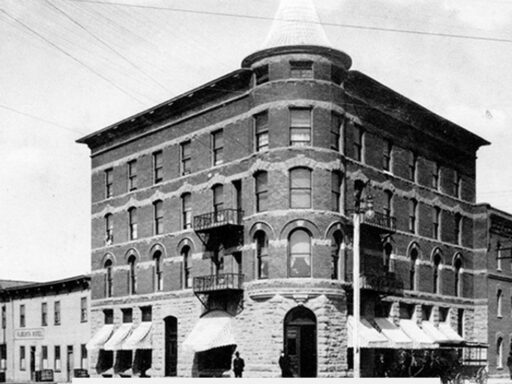Japan attacks Pearl Harbor despite knowing the US would declare war to delay and weaken American naval power, securing time and advantage for its territorial expansion efforts.
The Japanese Empire viewed conflict with Western powers, especially the United States, as inevitable. Japan had expanded aggressively into mainland China and North Asia. It refused to retreat from these areas despite mounting international pressure and economic sanctions. This stance set the stage for open confrontation.
Japan depended heavily on importing key raw materials such as oil and rubber, mainly coming from the US and European colonies in Southeast Asia. The US-controlled Philippines stood between Japan and these vital resources. Securing access required challenging American influence in the region.
Japan’s military plans aimed at seizing and fortifying an “outer ring” of islands in the Pacific, including the Marshalls, Gilberts, and Solomons. The plan involved establishing air bases, submarine outposts, and troop garrisons to bleed any counterattacks from the US. From nearby bases in the Marianas and Carolines, Japan hoped to weaken the US Navy stepwise.
Japanese naval officers, confident in the capabilities of the Imperial Japanese Navy’s carrier-based aviation, devised an ambitious plan. They intended to deliver a surprise strike that would cripple the US Pacific Fleet at Pearl Harbor. The goal was not to destroy the US Navy entirely but to delay its ability to respond effectively.
By striking first at Pearl Harbor, Japan aimed to buy critical time to consolidate its gains and fortify its defensive perimeter. This could shift strategic calculations and force the US to negotiate from a position where Japan might retain most of its territorial acquisitions.
The attack was a calculated risk. Japan accepted that war with the US was unavoidable but sought to start the conflict on terms that maximized its initial advantage. Hamstringing the US Navy made subsequent US counterattacks slower and weaker, helping Japan prepare for a prolonged conflict.
- Japan regarded conflict with the US as unavoidable due to territorial ambitions and resource needs.
- Dependence on oil and rubber imports made securing Southeast Asia critical, blocked by US presence in the Philippines.
- Japan’s strategy involved creating a fortified outer defense line in the Pacific to delay US counterattacks.
- The Pearl Harbor strike aimed to disable the US Pacific Fleet, buying time and strategic leverage.
- Japan intended to negotiate after weakening US naval power, hoping to keep most of its conquests.
Why Would Japan Attack Pearl Harbor Knowing the US Would Declare War on Them?
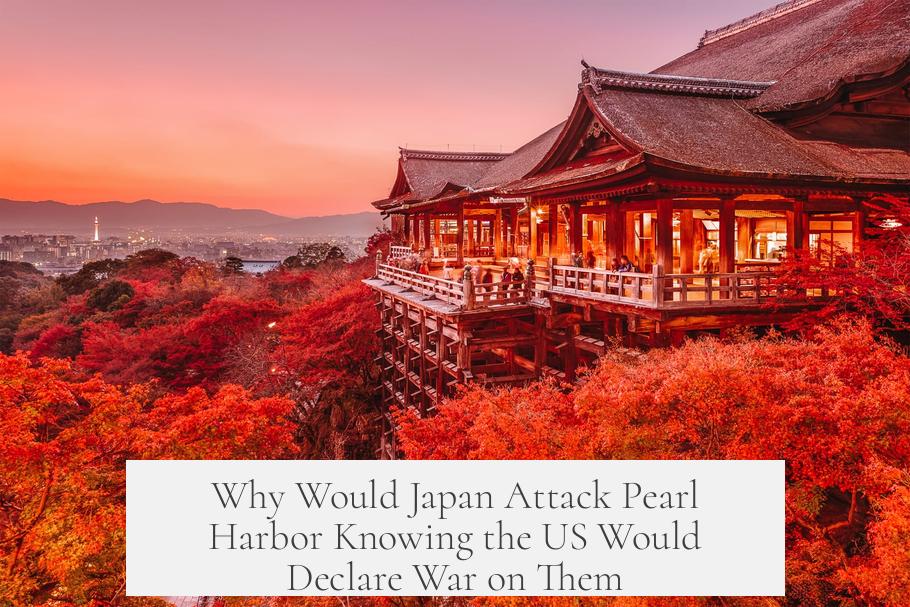
Japan’s decision to attack Pearl Harbor was a calculated risk rooted in a blend of strategic desperation, resource dependency, and a reluctant acceptance that war was unavoidable.
Why launch a surprise attack, fully aware the US would declare war? The answer requires digging beneath the surface of history’s big chessboard. Japan saw conflict not as some sudden mishap but as an imminent clash they couldn’t dodge. The attack was a brutal opening move to shape the battlefield on their terms.
On a Collision Course with the West
By late 1941, Japan had tangled with nearly every major Western power in Asia. It occupied vast chunks of mainland China and parts of North Asia, stubbornly refusing to pull back despite intense international pressure and economic sanctions. In essence, Japan was on a one-way train to conflict with the US, UK, and European powers. Their empire had expanded aggressively, carving out territories they genuinely intended to hold.
Imagine being cornered: Japan felt it couldn’t back down without losing face and strategic advantage. The US was increasingly hostile, banning oil shipments and strategizing its own military positioning in the Pacific. The ancient proverb “he who strikes first, strikes best” might as well have been Japan’s mantra.
Resource Hunger: The Real Fuel Behind the Attack

Japan’s war machine wasn’t powered by empty ambition alone. Oil and rubber were vital for maintaining their industrial and military engine—and most of these raw materials came from the US or European colonies in Malaysia and the Dutch East Indies. Without access, Japan’s expansion plans and war efforts would grind to a halt.
Between Japan and these crucial resource zones lay the US-controlled Philippines. It was a geographic thorn in Japan’s ambitious side, making US naval and military forces a direct threat to Japan’s resource lifelines. Japan saw an attack on US Pacific forces as key to securing the southern resources necessary to keep their empire alive.
Planning the Larger Picture: Island Fortresses and Decisive Battles
Japan didn’t just intend to fight a wild brawl. Its military strategy was methodical. The Japanese war plan involved seizing and fortifying an “outer ring” of islands stretching from the Marshalls and Gilberts down to the Solomons. These fortified points would act as mutually supporting air bases, submarine launchpads, and troop garrisons designed to wear down any US counter-offensive.
The Imperial Japanese Navy, operating from inner island chains like the Marianas and Carolines, would then gradually throttle US forces. The goal? To stretch enemy supply lines, sap their strength, and present the US fleet for a final, decisive naval battle. Win or negotiate from a position of strength, Japan hoped to keep at least the bulk of its territorial gains.
The Hard Choice: War Is Inevitable—Now What?
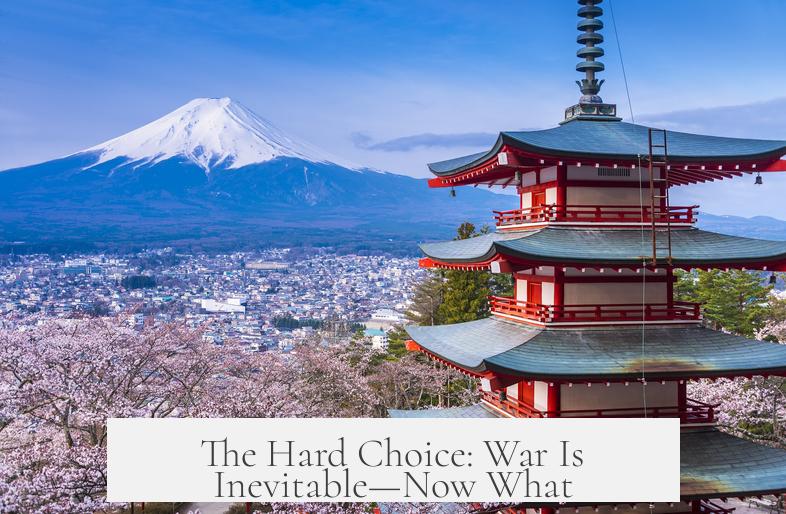
As international pressure mounted, Japan’s cabinet faced an unpalatable reality: withdrawing from occupied China wasn’t on the table. Sanctions were biting—and waiting passively was not an option. After all, Japan couldn’t starve its war machine or surrender its territorial ambitions without severe consequences for its national pride and security.
So the critical question arose: How do we start a war we already know is coming, on terms most favorable to us? This query led to a bold plan—one driven by the Imperial Japanese Navy’s air power advantage.
Experienced naval officers pitched a daring idea: launch a surprise strike on the Pacific Fleet’s main force stationed at Pearl Harbor. This wasn’t reckless bravado but a calculated move to cripple the US Navy and delay inevitable retaliation. The hope was that a disabled American fleet would buy Japan precious time to fortify and expand its defensive perimeter.
Did It Work? A Strategic Gamble with Mixed Returns
The attack on Pearl Harbor on December 7, 1941, was devastating. Several battleships and hundreds of aircraft were damaged or destroyed. Japan’s hope was to delay the US Navy long enough to consolidate their gains in Asia and the Pacific.
However, the Japanese gamble underestimated the resilience and industrial capacity of the United States. The US quickly rebuilt its naval power, turning the tide within a few years. Still, from Japan’s viewpoint in 1941, the attack wasn’t reckless—it was a necessary and audacious attempt to shape an unwelcome but inevitable war.
What Can We Learn from Japan’s Decision?

- Strategic Inevitable Conflict: Japan didn’t believe peace with major Western powers was achievable without sacrificing its territorial ambitions.
- Dependency on Resources: Control of natural resources was essential to Japan’s survival, making conflict with resource-guarding powers inevitable.
- Calculated Risk: The Pearl Harbor strike aimed to cripple American naval power temporarily—not destroy it permanently.
- Psychological Warfare: Japan sought to shock and demoralize the US, hoping to force negotiated peace favorable to Japanese interests.
Ultimately, Japan’s attack reflected a grim acceptance that war was unavoidable. Rather than wait to be hit first, Japan chose to strike first, aiming to rewrite the brutal rules of engagement in the Pacific.
Could Japan Have Taken a Different Path?
Had Japan chosen to withdraw from China or accept economic sanctions, it might have delayed the conflict—but at what cost? Domestic pride, military leadership ambitions, and geopolitical goals made compromise nearly impossible. So, their leaders rolled the dice on Pearl Harbor.
Looking back is easier than living it. Japan gambled that a swift, crippling first strike would keep them ahead. They underestimated the industrial might and resolve of the United States. The aftermath speaks volumes—sometimes, knowing you’re headed for war means making bold moves and hoping for the best.
“They chose to strike first, fully aware they’d awaken a sleeping giant.”
In the end, Japan’s attack on Pearl Harbor is a stark lesson in the harsh realities of geopolitics, resource scarcity, and the consequences of strategy rooted in inevitability rather than hope. It’s a dramatic moment in history where knowledge of war’s arrival didn’t deter action but instead demanded immediate and ruthless preemption.
